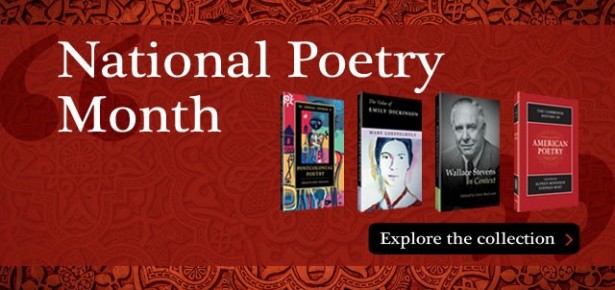
Vǫluspá (The Seeress’s Prophecy) cycles through the memories and prognostications of an unnamed female prophetess who has witnessed the whole history of a legendary world, and culminates in a baleful account of ragna rök – Wagner’s Götterdämmerung, ‘the downfall of the gods’. It was then, she foretold, that the sun and moon would vanish from the sky, consumed by cosmic wolves and in an almighty conflagration, the earth would sink beneath the waves. In this poem, the past and the future meet on the field of legend.
Old Norse myths and legends were primarily preserved in the rich corpus of eddic poetry, an elegantly restrained traditional style of stanzaic verse. Here’s a sample verse from the poem Helgakviða Hundingsbani I (The First Poem of Helgi, Slayer of Hundingr). Helgi, a Viking hero, is sailing across the Baltic Sea in his longship (the letter ð is pronounced like ‘th’ in ‘that’):
Varð ára ymr There was the splash of oars
ok járna glymr, and the clash of iron,
brast rǫnd við rǫnd, shield smashed against shield,
reru víkingar; the vikings rowed on;
eisandi gekk hurtling it went
und ǫðlingum beneath the heroes,
lofðungs floti the leader’s ship
lǫndum fjarri. far from the land. (v. 27)
eddic poems are driven by the emotion and drama of Norse mythology.
Alliteration, assonance, repetition and rhythm all have their part to play in the stanza’s soundscape. The echoing vowels in the first two lines, the percussive brast and repeated rǫnd suggest the noise of the ship’s passage, alternating between smooth rhythmic rowing and the rattle of the shields at each pull on the oars.
Written down by medieval Icelandic scribes in Old Norse, and deeply rooted in oral traditions expressing the beliefs and society of Viking-Age Scandinavia (from approximately the ninth to the eleventh centuries AD), eddic poems are driven by the emotion and drama of Norse mythology. As in Vǫluspá, they often dwell on the liminal points of mortal experience: beginnings and (especially) endings. In other cases they distil key moments in the legends of gods or heroes. The aim is rarely in fact simply to tell the story. Basic knowledge of this kind is assumed by the poet or poets responsible. Sometimes they even tell the same story twice. Much like their modern counterparts of literature and screen – from Achilles and Arthur to Sherlock Holmes and Batman – the heroes and heroines of eddic poetry could be recycled by poets to draw out models and exempla for real-life men and women, using legends which were well-known enough to form common ground for both poet and audience. Hence these poems are at once a crucial source for information about the pre-Christian mythology of Scandinavia and all that one associates with it – dragons, dwarfs, valkyries, elves, gods such as Óðinn, Þórr and Loki – and a glimpse into the way this mythology was understood. The meaning and consequences of universal themes such as betrayal, loyalty, wisdom and love (to name just a few) thus recur in eddic poetry several times over.
The meaning and consequences of universal themes such as betrayal, loyalty, wisdom and love (to name just a few) thus recur in eddic poetry several times over.
Individual poems – all composed anonymously – adopt different perspectives in order to accentuate the point at stake. Most texts are framed as the speeches of one or more protagonists, quite a number using a dialogic structure; manuscripts preserving eddic poetry even include prose passages to introduce the narrative context of the texts which follow, and on occasion, ‘stage directions’ indicating which character speaks which stanza. This lends it a powerful and immediate quality, sometimes explicitly competitive or building up to a climactic revelation: one text, for example, concerns a life-or-death contest of wits between a wise giant and Óðinn which ends with the giant’s defeat just as he grasps the identity of his rival.
Eddic poetry is also remarkable for the range of characters who deliver these speeches. Women’s perspectives are prominent, either egging men on, or processing the painful consequences which arise from heroic acts of violence. ‘I am as little as a leaf among the bay-willows now the prince [i.e. the hero Sigurðr] is dead’, laments Guðrún in one of the poems. The larger-than-life world of myth vividly portrays the emotional trauma of loss. It is this transformation of legendary source material into realities of human experience which draws the reader into eddic poetry, just as it seemingly drew Viking audiences into their myths a thousand years ago.
Old Norse myths and legends – and the poems which make them come alive – have lasting appeal.
Indeed, these myths and legends of early Scandinavia seem to be having a moment. In the last couple of months, the world-famous fantasy author Neil Gaiman published his retelling of Old Norse mythology, relating tales of the gods from before the creation to ragna rök – and beyond. Carolyne Larrington (one of the Handbook’s editors) has also brought out a guide to Norse myths and legends. Yet, this particular moment has been going on for twenty-five years, in the reworkings of Old Norse myth and legend undertaken by authors such as Joanne Harris and, A. S. Byatt. Before them came J.R.R. Tolkien, C.S. Lewis, William Morris, and, of course, Wagner himself, composer of Der Ring des Nibelungen (The Ring of the Nibelung). Old Norse myths and legends – and the poems which make them come alive – have lasting appeal.
Click here to read a free chapter from A Handbook to Eddic Poetry edited by Carolyne Larrington, Judy Quinn and Brittany Schorn
Celebrate National Poetry Month with Cambridge University Press! Get 20% off this book and a select range of other titles by clicking here
Latest Comments
Have your say!